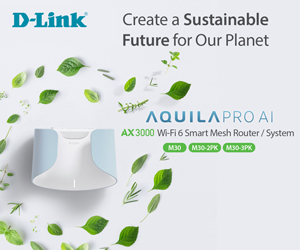Most people buy a smartphone with little knowledge of what they really need. Ten essential tips for buying a smartphone gives you the power to get what you, not the salesperson wants.
When you walk into a store, the salesperson asks two questions. Are you an iPhone user (in which case, stop reading now as you will take whatever has its logo on it), and if not, what do you want to spend?
Then as salespersons are wont to do, they will show you the easy sell. They invariably trot out Samsung or the brands/models with the current largest sales incentives.
In Samsung’s case, it is hard to go wrong. But there are other brands like OPPO, vivo, realme, Motorola, TCL and Nokia. These invariably offer class-leading features like more RAM and storage, better cameras, longer warranty, and bigger fast-charging batteries. To be clear, you may have to ask to see these brands or do a little research first.
Here is Cybershack’s tested way to better buying a smartphone. Models usually change every six months, so we look at what you get and flag our current (January 2023) picks based on JB Hi-Fi prices
Ten essential tips for buying a smartphone
It is a bad idea to go food shopping when you are hungry. So, never go phone shopping without a firm budget and a good idea of what you need. Otherwise, you are at the mercy of the salesperson to psychologically upsell (called cognitive dissonance – go on, you deserve it) in a ‘this is good, better, and best’ scenario. If all you need is a three-cylinder car, then don’t drive out with a V6.
What can you afford?
- <$100 – Feature phones.
- $101-199 – 4GB RAM and 32GB, dual camera, and 5000mAh battery, MediaTek SoC, 4G. Pick – Motorola g22 – cheap and cheerful
- $200-299 – 4GB RAM and 64GB, tri camera, 5000mAh battery, MediaTek or Qualcomm SD4XX, 4G. Some will have 128GB and NFC for Google Pay. Pick – OPPO A16s – everything you need in a low-cost smartphone (review)
- $300-399 – Low-end 5G territory with MediaTek Dimensity 700 or Qualcomm SD4XG. You may find these drop back to 64GB to afford the 5G processor. Pick – OPPO A76 4G – honest, reliable and fast charging and runner up Motorola g62 5G – everything you need for $399
- $400-499 – Sweet spot where brands stop cutting corners and start making some nice phones. All 5G, 128GB, and some will even have high-end 108MP cameras. Pick – OPPO A77 5G – fast charging on a budget. Runner Up Motorola g82 5G – exceptional value/features
- $500-599 – ‘Lite’ versions of upper mid-tier phones. All that means is that they may use a MediaTek Dimensity 800 series SoC and lower megapixel cameras. Pick – Motorola Edge 30 Neo – Pantone colours for the trendy set
- $600-$699 – Serious 5G territory. You should expect things like a 1080p AMOLED screen, 128GB, fast charging, and better cameras. Pick Motorola Edge 20, OPPO Reno 4, Samsung Galaxy S20 FE (runout). PIck Motorola Edge 30 – fantastic value 5G phone
- $701-799 – Not much action, but you usually see run-out discounts here. ick – Samsung A73 5G – the pick of the 2022 A-series
- $800-$899 – The most you need to pay for a fully-featured mid-range with A Qualcomm SD7XX processor, 256GB, and some excellent cameras. Pick
- Motorola Edge 30 Fusion – a diamond in the rough
- $900-$999 – Entry-level versions of premium models and offer excellent price and performance. Look for at least 128GB, Qualcomm SD8XX and 50MP tri-cameras, fast charging, and AMOLED screens. Pick – Motorola Edge 30 Pro is the value flagship king
- $1000-1099 Pick – Samsung Galaxy S21 FE, Fan Edition
- $1100-1199 Pick – Motorola Edge 30 Ultra – a flagship-class cameraphone
- $1200-1299 Pick – Google Pixel 7 – high-class, almost identical twins
- $1300-1399 Pick – OPPO Find X5 – the more affordable flagship sibling
- $1400-1499 Pick – Google Pixel 7 Pro – high-class, almost identical twins
- $1500-1599 Pick – Motorola Razr 2022 – A full-featured Fab Flip for percipient people
- $1600-1699 Pick – Samsung Galaxy S22+ – which is for you?
- $1700-1799 Pick – OPPO Find X5 Pro – a superb Android flagship with insanely fast charge
- $1800-1899 – Samsung Galaxy S22 Ultra is closer to perfection – at a price
Processor/RAM/Storage/Micro-SD
Systems on a Chip (SoC) come from Qualcomm, MediaTek, Samsung Exynos, and lately, Google Tensor (Samsung based). Think of these like car engines – 3-cylinder, 4 cylinders, V6, V8, and ludicrous.
- Lower cost 4g use MediaTek or Qualcomm SD4XX.
- Lower cost 5G use MediaTek Dimensity 700 or 800 and Qualcomm SD4XG, 6XG.
- Higher cost use Samsung Exynos 2100, Qualcomm 7XG, or 8XG (flagship now use SD8 Gen 1 or 2).
There is little difference in performance at the lower end, but it makes a massive difference for gaming and pro use at the higher end.
32-bit Android Go runs on 3GB or less, and we can not recommend this as it is slow and does not run all Android Apps.
64-bit Android runs on 4GB, so buy as much RAM as you can get. While 64GB storage is a minimum (about 32GB free), 128GB or more allows you to keep more photos and music. Micro-SD enables you to increase storage inexpensively but, for the most part, cannot be ‘mounted’ to run apps or use as live storage, meaning you have to copy from the system storage to it.
Screen
Most screens are 6.4″ or larger. Cheaper models use LED/LCD 720p screens, followed by 1080p and 2160p. I have not seen a bad screen yet but go for at least a 1080p if you can get it. LCD screens have poor daylight readability. AMOLED screens are brighter and have better daylight readability.
Refresh rates vary from 60, 90 to 120Hz. Unless you are a gamer, 60Hz is fine and gives better battery life.

Battery
Most have between 3000-5000mAh batteries – the bigger the ‘tank’, the longer it should last. More critical is recharge speeds. Cheaper phones have 10W chargers and can take 4-6 hours. 15W’ Fast charge’ (a real misnomer) may reduce that time by an hour. If fast charge (from 35 minutes to under 2 hours) is important, look for OPPO 35W fast charge, or phones supporting Qualcomm QC 4+. For example, the latest Samsung Flip3 takes 99 minutes to charge with a special 25W Samsung charger but nearly six hours with a 15W charger.


Camera
All brands claim camera ‘prowess’, but the fact is that lower-cost smartphones take pretty good pictures in day-or-office light (we call that better than social media standards). Here a primary sensor of 12MP and perhaps a depth or macro sensor of 2MP is all you need. Selfies will usually be 8MP.
More expensive ones $500+ add ultra-wide, wide-angle, macro, depth, microscope, telephoto, and night mode. Here standard specs include a primary sensor of 50MP (bins to 12.5MP), 8-10MP ultra-wide, and lots of AI processing power are standard.
Flagships are now coming with 108 and 200MP primary sensors and specialised silicon (like OPPOs MariSilicon X) and heaps of AI power to take superb photos day or night.
Unless you are a camera buff, don’t decide based on camera specifications.

Phone reception strength 4G and 5G
Most low-cost phones, especially 5G ones (Dimensity SoC), have low reception signal strength, only finding the closest tower. A Google Play app Network Cell Info Lite can measure strength in femtowatts (fW) and picowatts (pW = 1000 fW). It also measures the strength of adjacent towers. All phones are acceptable in the city and suburbs, where towers are plentiful.
Phone makers can pay Telstra to test for Bluetick, but it is expensive. Samsung Galaxy S22/+ 5G, S21 FE, and 22 Ultra have Bluetick (not iPhone). We have found that the OPPO Find X5 Pro (Qualcomm SD8 Gen 1 exceeds these for signal strength.
5G is trendy, but 5G data is more expensive. You can use any 5G phone as 4G and access low-cost 4G resellers like Woolie, Aldi, Boost, etc.
Wi-Fi, Bluetooth (BT), Sensors, GPS, and NFC
Pretty well, all lower-cost phones will have Wi-Fi AC (433-866Mbps), BT 5.x, single-band GPS, and at least a combo accelerometer/gyroscope and ambient light sensors.
Better phones have Wi-Fi 6 or 6E, BT 5.2 or 5.3, dual GPS and more sensors. If you need more like step recording, altimeter, gravity gaming rotation, barometer, etc., a Google Play app AIDA64 will tell you what sensors are in a phone.
NFC enables Google Pay (PayWave) for convenient payment.
Sound
Most lower-cost phones are mono (earpiece speaker for phone calls and a bottom-firing speaker for ringtones, alarms, and music). These are all tuned for clear voice and abysmal for music with no bass or treble to round out the mid-signature. If you listen to music via 3.5mm buds or BT earphones, all will sound OK.
If you want a better experience, stereo speakers are necessary. It is hard to get much better or more immersive sound from micro-speakers. Here amplifiers are better, support hi-res music, and give better sound over 3.5mm and BT.
A note on Dolby Atmos and DTS:X – it is all a sham and will not give you expansive 3D spatial sound. All it means is that it can downmix to the phone’s stereo speakers. It may provide a better sound stage. It is not the reason to buy. Having an EQ (equaliser) on the phone is far more helpful. If sound quality is important to you, read our sound guide for more.

Android
All phones should ship with Android 12 or 13. Some will upgrade to 13, 14, or later. Upgrades are nice, but you won’t get that on low-cost phones. Look for security patch update policies that can be up to four years – the longer, the better.
Warranty and support
Sadly, Samsung and Apple only have 1-year warranties, but you can buy expensive warranty extensions. Some companies offer two years (or longer), so select the phone in the price bracket with the longest warranty. Read What are the official Android OS and Security update policies? (guide).
But if things go wrong, you need good support. OPPO, and Motorola seem to have nailed that.
Buy genuine
Hey – you said ten tips! Well, this is vital consumer advice. The moment you step outside the usual significant retailers and telcos, you will 99% be likely to buy a grey market or parallel import phone. Tell-tale signs include international power adapters (or non-genuine AU ones), shrink-wrapped (no box), Start-up screen in an Asian language, and no RCM C-Tick mark under Settings, Regulatory information.
These phones, no matter how much of a bargain generally
- Have no Australian warranty or support
- Will never update over the air
- Can’t make a 000 emergency call without a SIM
- Won’t support all Australian 4G and 5G bands
- Won’t work on 5G in Australia anyway
- And can lead to billing issues as they are tuned for international networks
Read Don’t buy a grey market phone (guide)
This warning applies to second-hand, refurbished, and so-called demo stock sold via the likes of Kogan, Dick Smith, Matt Blatt, Amazon, and eBay ‘marketplaces’. Read Buying a second-hand or refurbished phone. Bargain or other persons problem
Be warned – it is a huge problem.


So you thought that buying a smartphone was easy?
We could have confused you with second-hand values (none after three years) and so many more of the 70+ tests we run. Suffice it to say that you really cannot go wrong shopping at JB Hi-FI, GoodGuys, Harvey Norman, Officeworks, Bing Lee and the major Telcos. Once you have purchased outright, don’t take the first mobile voice and data plan – shop around as there is amazing value from $20 per month at Woolworths (Telstra network), Aldi (Telstra), Boost (Telstra) and Coles.
Read Telstra’s Retail Vs Wholesale mobile plans – the catches you need to know.
Cybershack smartphone reviews and tips for buying a smartphone









Comments